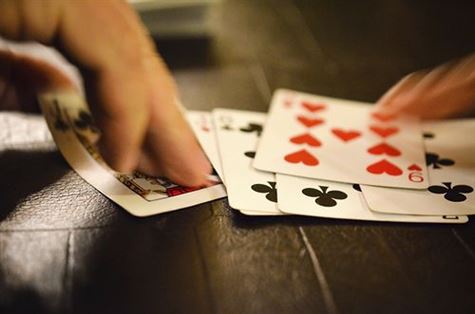Pot odds and expected value are two fundamental concepts in poker that can greatly impact a player’s profitability. Understanding these mathematical principles is crucial for making informed decisions at the poker table. Pot odds refer to the ratio of the current size of the pot to the cost of a contemplated call, while expected value calculates the potential long-term profitability of a particular play. By mastering these concepts, players can make more strategic decisions and increase their chances of success in the game of poker.
Understanding Pot Odds: A Key Strategy for Poker Success
To understand pot odds, it is essential to grasp the concept of expected value (EV). Expected value is a mathematical calculation that represents the average amount a player can expect to win or lose on a particular play over the long run. It is calculated by multiplying the probability of each possible outcome by the amount that can be won or lost in each outcome and summing them up.
For example, let’s say a player is considering calling a bet of $50 into a pot of $200. The pot odds in this situation would be 4 to 1 (200 divided by 50). To determine whether the call is profitable in the long run, the player needs to compare the pot odds to the expected value of the hand.
To calculate the expected value, the player needs to estimate the probability of winning the hand. This estimation is based on the player’s knowledge of their own hand, the community cards, and the likely hands of their opponents. Let’s say the player estimates their chances of winning the hand to be 30%.
To calculate the expected value, the player multiplies the probability of winning (30%) by the amount that can be won ($200) and subtracts the probability of losing (70%) multiplied by the amount that can be lost ($50). In this case, the expected value would be $60 (0.3 * $200 – 0.7 * $50).
If the expected value is positive, it means that the call is profitable in the long run. In this example, the positive expected value of $60 indicates that the player should make the call. Even if the player loses this particular hand, they can expect to make a profit over time by consistently making similar calls with positive expected values.
Understanding pot odds and expected value allows players to make more rational and strategic decisions at the poker table. By comparing the pot odds to the expected value, players can determine whether a particular play is profitable or not. If the pot odds are higher than the expected value, it is a profitable play, and the player should call or raise. If the pot odds are lower than the expected value, it is a losing play, and the player should fold.
It is important to note that pot odds and expected value are not the only factors to consider in poker. Other factors, such as the playing style of opponents, table dynamics, and the player’s own skill level, also play a significant role in decision-making. However, understanding pot odds and expected value provides a solid foundation for making informed decisions and increasing the chances of long-term profitability.
Calculating Expected Value in Poker: Maximizing Your Profits
To calculate expected value, one must consider both the probability of winning a hand and the potential payout. Let’s say you are playing a hand of Texas Hold’em and are faced with a decision to call a bet on the river. To determine the expected value of calling, you need to assess the likelihood of winning the hand and the amount you stand to win if you do.
For example, if there is $100 in the pot and your opponent bets $50, you need to evaluate the probability of winning the hand. Let’s say you estimate that you have a 30% chance of winning. To calculate the expected value, you multiply the probability of winning (0.30) by the potential payout ($150, which includes the $100 pot and the $50 bet). In this case, the expected value of calling would be $45 (0.30 x $150).
If the expected value is positive, it means that calling would be a profitable move in the long run. Conversely, if the expected value is negative, it indicates that folding would be the more profitable decision. By calculating the expected value of different actions, players can make informed choices that align with their long-term profitability goals.
Understanding expected value is particularly useful when considering pot odds. Pot odds refer to the ratio of the current size of the pot to the cost of a contemplated call. By comparing the pot odds to the expected value, players can determine whether a call is mathematically justified.
For instance, if the pot contains $200 and your opponent bets $50, the pot odds would be 4:1 ($200/$50). If your expected value of calling is higher than the pot odds, it would be a profitable move to call. In this scenario, if your expected value is $60, calling would be justified since it exceeds the pot odds of 4:1.
Calculating expected value and comparing it to pot odds allows players to make rational decisions based on the potential profitability of a move. It helps players avoid making impulsive decisions based solely on emotions or short-term outcomes. By focusing on the long-term expected value, players can make more strategic choices that lead to increased profits over time.
It’s important to note that calculating expected value and pot odds requires a solid understanding of probability and basic mathematical skills. However, with practice and experience, players can become more proficient in these calculations and use them to their advantage at the poker table.
The Importance of Pot Odds and Expected Value in Decision Making
Pot odds refer to the ratio of the current size of the pot to the cost of a contemplated call. It is a fundamental concept in poker that helps players determine whether or not a particular decision is profitable in the long run. By comparing the potential reward of winning the pot to the cost of making a bet or call, players can make informed decisions that maximize their chances of success.
Expected value, on the other hand, is a mathematical concept that takes into account both the probability of winning a hand and the potential payoff. It is calculated by multiplying the probability of winning by the amount that can be won and subtracting the probability of losing multiplied by the amount that will be lost. By considering the expected value of a decision, players can determine whether or not it is likely to be profitable in the long run.
Understanding and utilizing pot odds and expected value is crucial in poker because it allows players to make decisions that are based on logic and mathematics rather than emotions or gut feelings. By considering the potential reward and the cost of a decision, players can avoid making costly mistakes and increase their overall profitability.
For example, let’s say a player is faced with a decision to call a bet on the river. The pot currently contains $100, and the cost of the call is $20. By calculating the pot odds, the player can determine that the pot odds are 5:1 (100/20). If the player’s chances of winning the hand are greater than 1 in 5, then the call would be profitable in the long run.
However, pot odds alone are not enough to make a decision. Expected value must also be considered. If the player’s chances of winning the hand are 1 in 4, but the potential payoff is $200, then the expected value of the call would be $40 (0.25 * 200 – 0.75 * 20). In this case, even though the pot odds are not favorable, the expected value of the call is positive, making it a profitable decision in the long run.
By understanding and utilizing pot odds and expected value, players can make more informed decisions that maximize their chances of success. It allows them to weigh the potential reward against the cost of a decision and make choices that are based on logic and mathematics rather than emotions or gut feelings.
Mastering Pot Odds: How to Make Informed Bets in Poker
Understanding pot odds is essential because it allows players to make rational decisions based on the potential return on their investment. If the pot odds are greater than the odds of completing a hand, it is generally a profitable bet in the long run. Conversely, if the pot odds are lower than the odds of completing a hand, it is usually a losing proposition.
Expected value (EV) is another critical concept in poker. It is a mathematical calculation that represents the average amount a player can expect to win or lose on a particular bet over the long term. To calculate expected value, players need to multiply the probability of winning by the amount they stand to win and subtract the probability of losing multiplied by the amount they stand to lose.
By calculating the expected value of a bet, players can determine whether it is a profitable move or not. If the expected value is positive, it means the bet is likely to result in long-term profits. Conversely, if the expected value is negative, it indicates that the bet is likely to result in long-term losses.
To illustrate the importance of pot odds and expected value, let’s consider a hypothetical scenario. Suppose a player is playing Texas Hold’em and has a flush draw after the flop. There are nine cards left in the deck that can complete the flush, and the player knows that the odds of completing the flush are approximately 4:1.
If the pot is $100 and the player’s opponent bets $20, the pot odds are 5:1. In this case, the pot odds are higher than the odds of completing the flush, making it a profitable bet in the long run. Additionally, by calculating the expected value, the player can determine the potential profitability of the bet.
Suppose the player estimates that winning the hand will result in a $200 profit, while losing the hand will result in a $50 loss. By multiplying the probability of winning (1/5) by the potential profit ($200) and subtracting the probability of losing (4/5) multiplied by the potential loss ($50), the player can calculate the expected value.
In this scenario, the expected value is $30, indicating that the bet has a positive expected value and is likely to result in long-term profits. Armed with this knowledge, the player can confidently make the bet, knowing that it is a mathematically sound decision.
Using Pot Odds and Expected Value to Gain an Edge in Poker Tournaments
To calculate pot odds, players need to know the size of the pot and the cost of the bet or call they are considering. For example, if the pot is $100 and the cost of a call is $20, the pot odds would be 5:1. This means that for every $1 you invest, you stand to win $5 if you win the hand. If the pot odds are greater than the odds of completing your hand, it is generally a profitable decision to call.
Expected value, on the other hand, takes into account both the pot odds and the probability of winning a hand. It is a more comprehensive calculation that helps players determine the long-term profitability of a particular decision. By considering the potential payout, the cost of participating, and the likelihood of winning, players can make more accurate assessments of the value of their decisions.
To calculate expected value, players need to multiply the probability of winning a hand by the potential payout and subtract the cost of participating. For example, if the probability of winning a hand is 25%, the potential payout is $200, and the cost of participating is $50, the expected value would be $200 * 0.25 – $50 = $0. By comparing the expected value to the cost of participating, players can make more informed decisions about whether to play a hand or fold.
By understanding and utilizing pot odds and expected value, players can gain a significant edge in poker tournaments. These calculations allow players to make more informed decisions about when to call, raise, or fold, based on the potential profitability of each decision. By consistently making profitable decisions, players can increase their overall winnings and improve their chances of success in the long run.
In conclusion, pot odds and expected value are essential concepts in poker tournaments. By understanding and utilizing these calculations, players can make more informed decisions about when to participate in a hand and when to fold. By consistently making profitable decisions, players can gain an edge over their opponents and increase their chances of success in the long run. So, if you want to unlock the math of poker profits, mastering pot odds and expected value is a must.




